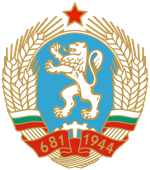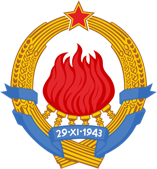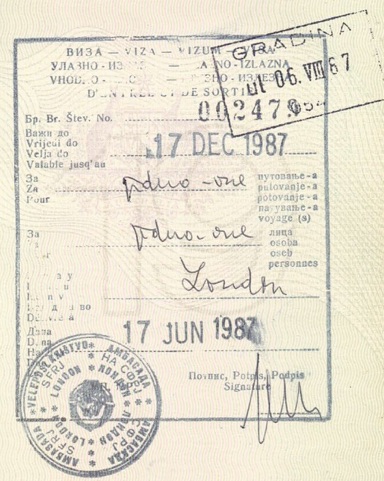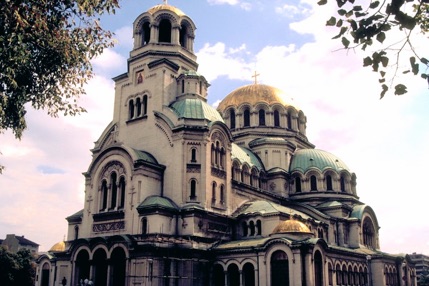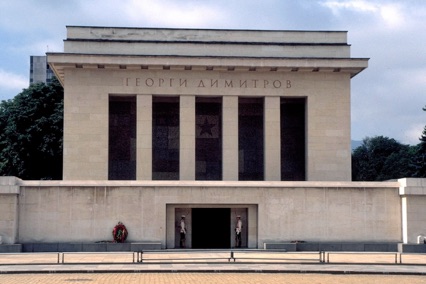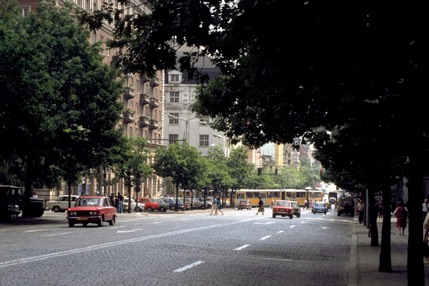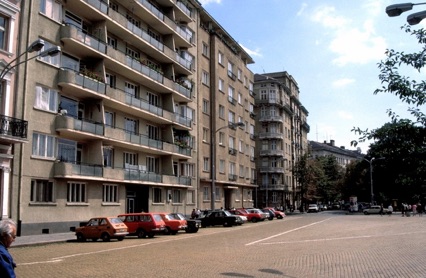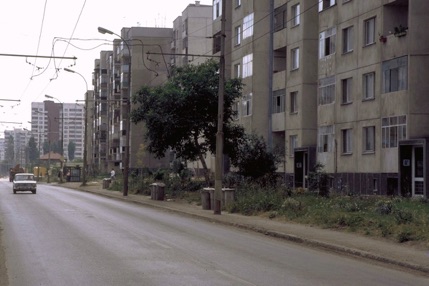Europe 1987

Kyrgyzstan and Tajikistan 2018

A cool change blew through Plovdiv last night and cooled everything somewhat, although it was still quite hot when out of the wind. We left Plovdiv a little before 9:00am and took the motorway for the 150 kilometre drive to Sofia, Bulgaria’s capital city.
Being keenly aware that we had an international border (into Yugoslavia) to negotiate later that day, we stopped only briefly in central Sofia. In some ways that was a pity, as we were quite impressed with the city, its cleanliness and pleasant layout. We walked around the imposing Nevsky Cathedral and the nearby parklands, and then made the short walk to September 9th Square (later to be re-named Battenberg Square) to see the (since demolished) mausoleum housing the body of Georgi Dimitrov, the first leader of Communist Bulgaria from 1946 to 1949. Apart from one more brief stop on the western outskirts of Sofia to photograph some new prefabricated high-rise flats under construction, we drove non-stop to the Yugoslav border crossing at Kalotina (Bulgarian side) and Gradina (or Gradinje) on the Yugoslav side.
Our hearts sank a little when we saw the long line of cars waiting on the Bulgarian side. However, things seemed to speed up miraculously and we were not subjected to any check at all before having our passports stamped. Entry into Yugoslavia was similarly fast.
Yugoslavia markets its tourism with the slogan “six republics, five nationalities, four languages, three religions and two alphabets – all in one beautiful mountainous land”. With no accommodation booked in Yugoslavia, our aim today was to travel as far as possible through this diverse federation towards the Adriatic coast.
We made our way through some spectacular mountain scenery and pretty villages surrounded by agriculture, together with some ugly, dirty towns and roadsides littered by extraordinary amounts of rubbish. Compared with Bulgaria, the roads were in fairly poor condition.
We drove through Pirot, Niš, Prokuplje, and Kuršumlija to Priština, the main city of the Kosovo region that is mainly populated by Moslem Albanians. Priština had a rough, somewhat threatening ‘frontier’ feel to it, and we were relieved to move beyond it. We turned right at the main intersection in Priština and continued driving to the west-north-west, taking the left fork at Titova Mitrovica to drive west along the Ibar River valley and Gazivodsko Jezero (Gazivoda Lake), an artificial lake formed on the Ibar River in the 1970s by the construction of a hydroelectricity reservoir.
We finally stopped in a lovely little village named Ribariće, having found accommodation in a small roadhouse beside a river and opposite a new mosque that was under construction. Located about 200 kilometres north-east of Titograd (later re-named Podgorica), it was a haven of quiet peace, and we had a lovely dusk walk along the river during which we experienced something of rural Yugoslav life as young girls and old women were herding their tiny flocks of goats (a flock here comprising perhaps two goats) on the narrow river flats.

Day 25
Plovdiv to Ribariće
Thursday 6 August 1987
